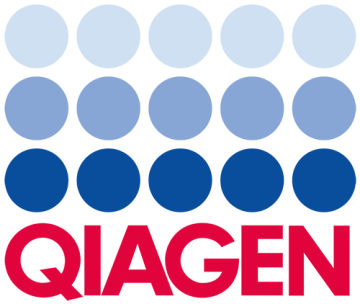PPAR Signaling
The peroxisome proliferator-activated receptor (PPAR) family consists of PPARα, PPARδ, and PPARγ. They act as ligand activated transcriptional regulators. Their ligands include n-3 and n-6 unsaturated fatty acids and their eicosanoid products which makes the PPARs closely linked to intracellular lipid levels. As a consequence they often regulate the expression of genes involved in lipid metabolism.PPARα and -δ are found in a complex with hsp90/hsp90-XAP2 which maintain PPAR in a repressed state...
Pathway Summary
The peroxisome proliferator-activated receptor (PPAR) family consists of PPARα, PPARδ, and PPARγ. They act as ligand activated transcriptional regulators. Their ligands include n-3 and n-6 unsaturated fatty acids and their eicosanoid products which makes the PPARs closely linked to intracellular lipid levels. As a consequence they often regulate the expression of genes involved in lipid metabolism.PPARα and -δ are found in a complex with hsp90/hsp90-XAP2 which maintain PPAR in a repressed state. These proteins dissociate upon binding of ligand to receptor. PPARα, -γ and -δ form heterodimeric complexes with the retinoid X receptor (RXR), bind to PPRE and induce genes that affect fatty acid metabolism, peroxisome proliferation,colon and hepatocarcinogenesis.PPAR function is supressed by cytokines, growth factors and insulin. For example, IL-1 and TNF-alpha suppress PPAR-γ function through NF-κB activated by the TAK1/TAB1/NIK cascade. PPARγ can be inhibited via the ERK pathway in response to growth factors. COUP-TF strongly antagonizes the action of PPARα. Thus PPARs regulate metabolic pathways.
PPAR Signaling Genes list
Explore Genes related to PPAR Signaling
AIP
Human
aryl hydrocarbon receptor interacting protein
CHUK
Human
component of inhibitor of nuclear factor kappa B kinase complex
CITED2
Human
Cbp/p300 interacting transactivator with Glu/Asp rich carboxy-terminal domain 2
ELP1
Human
elongator acetyltransferase complex subunit 1
FOS
Human
Fos proto-oncogene, AP-1 transcription factor subunit
GRB2
Human
growth factor receptor bound protein 2
HSP90AA1
Human
heat shock protein 90 alpha family class A member 1
HSP90AB1
Human
heat shock protein 90 alpha family class B member 1
HSP90B1
Human
heat shock protein 90 beta family member 1
IKBKB
Human
inhibitor of nuclear factor kappa B kinase subunit beta
IKBKE
Human
inhibitor of nuclear factor kappa B kinase subunit epsilon
IKBKG
Human
inhibitor of nuclear factor kappa B kinase regulatory subunit gamma
IL18RAP
Human
interleukin 18 receptor accessory protein
IL1F10
Human
interleukin 1 family member 10
IL1RAP
Human
interleukin 1 receptor accessory protein
IL1RAPL1
Human
interleukin 1 receptor accessory protein like 1
IL1RAPL2
Human
interleukin 1 receptor accessory protein like 2
IL1RN
Human
interleukin 1 receptor antagonist
IL36RN
Human
interleukin 36 receptor antagonist
JUN
Human
Jun proto-oncogene, AP-1 transcription factor subunit
MAP2K1
Human
mitogen-activated protein kinase kinase 1
MAP2K2
Human
mitogen-activated protein kinase kinase 2
MAP3K14
Human
mitogen-activated protein kinase kinase kinase 14
MAP3K7
Human
mitogen-activated protein kinase kinase kinase 7
MAP4K4
Human
mitogen-activated protein kinase kinase kinase kinase 4
MAPK1
Human
mitogen-activated protein kinase 1
MAPK14
Human
mitogen-activated protein kinase 14
MAPK3
Human
mitogen-activated protein kinase 3
NFKB1
Human
nuclear factor kappa B subunit 1
NFKB2
Human
nuclear factor kappa B subunit 2
NR0B2
Human
nuclear receptor subfamily 0 group B member 2
NR1H3
Human
nuclear receptor subfamily 1 group H member 3
NR2F1
Human
nuclear receptor subfamily 2 group F member 1
NRIP1
Human
nuclear receptor interacting protein 1
PDGFA
Human
platelet derived growth factor subunit A
PDGFB
Human
platelet derived growth factor subunit B
PDGFC
Human
platelet derived growth factor C
PDGFD
Human
platelet derived growth factor D
PDGFRA
Human
platelet derived growth factor receptor alpha
PDGFRB
Human
platelet derived growth factor receptor beta
PPARA
Human
peroxisome proliferator activated receptor alpha
PPARD
Human
peroxisome proliferator activated receptor delta
PPARG
Human
peroxisome proliferator activated receptor gamma
PTGS2
Human
prostaglandin-endoperoxide synthase 2
RAF1
Human
Raf-1 proto-oncogene, serine/threonine kinase
RAP1A
Human
RAP1A, member of RAS oncogene family
RAP1B
Human
RAP1B, member of RAS oncogene family
RAP2A
Human
RAP2A, member of RAS oncogene family
RAP2B
Human
RAP2B, member of RAS oncogene family
RASD1
Human
ras related dexamethasone induced 1
REL
Human
REL proto-oncogene, NF-kB subunit
RELA
Human
RELA proto-oncogene, NF-kB subunit
RELB
Human
RELB proto-oncogene, NF-kB subunit
SOS1
Human
SOS Ras/Rac guanine nucleotide exchange factor 1
SOS2
Human
SOS Ras/Rho guanine nucleotide exchange factor 2
SRA1
Human
steroid receptor RNA activator 1
STAT5A
Human
signal transducer and activator of transcription 5A
STAT5B
Human
signal transducer and activator of transcription 5B
TAB1
Human
TGF-beta activated kinase 1 (MAP3K7) binding protein 1
TNFRSF11B
Human
TNF receptor superfamily member 11b
TNFRSF1A
Human
TNF receptor superfamily member 1A
TNFRSF1B
Human
TNF receptor superfamily member 1B
TRAF2
Human
TNF receptor associated factor 2
TRAF6
Human
TNF receptor associated factor 6
Products related to PPAR Signaling
Explore products related to PPAR Signaling
QuantiNova LNA PCR Focus Panel Human PPAR Targets
GeneGlobe ID: SBHS-149Z | Cat. No.: 249950 | QuantiNova LNA PCR Focus Panels
QuantiNova LNA PCR Focus Panel
RT² Profiler™ PCR Array Human PPAR Targets
GeneGlobe ID: PAHS-149Z | Cat. No.: 330231 | RT2 Profiler PCR Arrays
RT2 Profiler PCR Array
QuantiNova LNA Probe PCR Focus Panel Human Nuclear Receptors & Coregulators
GeneGlobe ID: UPHS-056Z | Cat. No.: 249955 | QuantiNova LNA Probe PCR Focus Panels
QuantiNova LNA Probe PCR Focus Panel
QuantiNova LNA Probe PCR Focus Panel Human PPAR Targets
GeneGlobe ID: UPHS-149Z | Cat. No.: 249955 | QuantiNova LNA Probe PCR Focus Panels
QuantiNova LNA Probe PCR Focus Panel
QuantiNova LNA PCR Focus Panel Human Nuclear Receptors & Coregulators
GeneGlobe ID: SBHS-056Z | Cat. No.: 249950 | QuantiNova LNA PCR Focus Panels
QuantiNova LNA PCR Focus Panel
RT² Profiler™ PCR Array Human Nuclear Receptors & Coregulators
GeneGlobe ID: PAHS-056Z | Cat. No.: 330231 | RT2 Profiler PCR Arrays
RT2 Profiler PCR Array


